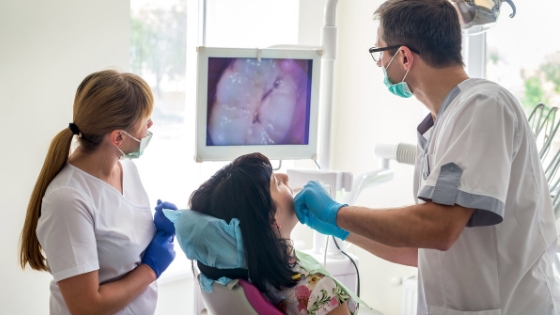How to Maximize the Use of Intraoral Cameras
H2 Different from title but including focus keywords
How to Maximize the Use of Intraoral Cameras
It is one thing to acquire intraoral cameras like the IRIS X80 Intraoral Camera for your dental practice and another to maximize its benefits. In this article, our Digital Doc team discusses how to maximize the use of intraoral cameras in your practice. Doctors worldwide have seen astonishing results using advanced dental technology.
Optimize the Installation
Some dental practitioners often wonder about which intraoral camera would be suitable for their needs. Without getting into the details of the different leading intraoral cameras available, the first thing is to ensure that you can actually use whatever camera you have. One way to use your intraoral camera is to install it where it is easy to access during any stage of the treatment process. Make sure that the intraoral camera is within reach in your operatory. In this way, you or your staff will not find it bothersome to access and use that equipment. The good thing about IRIS HD intraoral cameras is that they are portable and come with rechargeable batteries, so it is easy to integrate them in the routines at your dental office.
Let Your Assistant Use the Intraoral Camera Before You Assess the Patient
One of the best ways to maximize the value that you get from the IRIS USB Dental Camera for Windows is by asking your dental assistant to take several images during the hygiene visit. Your dental assistant can take close-ups of the areas before you come to examine the patient.
In this way, you will be able to reduce the time needed to diagnose the patient since the dental assistant has already provided you with what you need to diagnosis your patient.
Make It Facilitate Co-diagnosis
Another way to maximize the use of intraoral cameras like the IRIS Intraoral Camera for MAC is by giving your patients a ringside seat during their examination and treatment. Beam each image that you take on a large monitor so that the patient can see what you see. Next, discuss any problem areas that you have observed and ask the patient for their input regarding the specific images showing what you are referring to.
This collaborative effort will increase case acceptance because there will be no doubt in the mind of your patient regarding the issues that need to be fixed. A bonus of this approach is that patients will be more likely to take greater care of their dental health because they’ve witnessed the severity firsthand.
Let the Camera Make the Case for Follow-Up Visits
As already mentioned, the images taken using an intraoral camera can transform your case acceptance rates a great deal. In addition to that, those same images can address the issue of patients not returning for follow-up visits due to a misconception that such visits can wait.
Your patients will start coming for follow-up visits if you use your IRIS X80 Intraoral Camera to capture images of developing or suspected problems that require monitoring before a decision is made regarding what can be done. The progressive images will show how the suspected problem is developing, and those images will give the patient motivation to come for those follow-up visits as advised.
Use Them When Filing Insurance Claims
Many dental care treatments and procedures are covered by insurance. Therefore, your administrative staff will file claims for payment once patients with dental care insurance policies visit the practice.
The images taken using intraoral cameras should be sent together with the documentation submitted to the insurance company. Those images will expedite the processing of your payment claims because the insurance company will see the proof of the issues or the treatment received by a policyholder. Consequently, you will save the time and effort that would have been lost in back and forth communication with the insurance company over pending claims.
As you can see, we have just touched on a few aspects of the treatment process where the intraoral camera can be instrumental to your dental office. Use the suggestions above as guidelines for implementing dental cameras into your practice. Soon, you will see results in your patients’ treatments and your practice. Contact Digital Doc today to schedule a virtual demonstration and learn everything you need to know about our products.
Editor’s note: This post was originally published in February 2019 and has been completely revamped and updated for accuracy and comprehensiveness.











